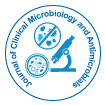

Commentary - (2023)Volume 7, Issue 2
In recent years, the field of microbiology has made tremendous advancements in understanding the intricate workings of microorganisms and their importance in various ecological systems. However, as with any scientific discipline, there is a flip side to this progress. Antimicrobial, a term encompassing the study of antimicrobial resistance and the mechanisms employed by microbes to evade or neutralize antimicrobial agents, has emerged as a critical area of concern. Exploring the rise of antimicrobial resistance, the consequences it poses to human health, and potential strategies to combat this global threat.
Antimicrobial resistance
Antimicrobial resistance is the capacity of microorganisms—such as bacteria, viruses, fungi, and parasites to withstand the effects of medications that were initially intended to eradicate them or prevent their development. The development and spread of Antimicrobial resistance have been sped up by the widespread use and abuse of antibiotics and other antimicrobial substances. Particularly bacteria have developed a variety of resistance methods, including as the ability to produce enzymes that render antibiotics inactive, change drug targets, and acquire resistance genes via horizontal gene transfer.
Consequences of antimicrobial resistance
The consequences of antimicrobial resistance are far-reaching and have significant implications for public health, animal health, and agriculture. In healthcare settings, the rise of multidrug-resistant bacteria has made infections increasingly difficult to treat, leading to longer hospital stays, higher healthcare costs, and an increased risk of mortality. Moreover, the dwindling arsenal of effective antibiotics threatens to undermine modern medical procedures, such as organ transplantation, cancer chemotherapy, and major surgeries, which rely heavily on the ability to control infections.
Beyond healthcare, Antimicrobial resistance also impacts animal agriculture and food production. The routine use of antibiotics in livestock farming has contributed to the emergence of resistant strains of bacteria that can be transmitted to humans through the food chain. This not only compromises animal welfare but also poses a potential risk for the spread of resistant bacteria among humans, further exacerbating the Antimicrobial resistance crisis.
Combating antimicrobial resistance
Addressing the challenge of Antimicrobial resistance requires a multifaceted approach involving the collaboration of healthcare professionals, researchers, policymakers, and the public. Firstly, there is a pressing need to improve antibiotic stewardship, ensuring the responsible use of antimicrobial agents in both human and veterinary medicine. This includes promoting appropriate prescribing practices, enhancing surveillance systems to monitor resistance patterns, and implementing infection prevention and control measures.
In addition to stewardship, the development of new antimicrobial agents is crucial to combat emerging resistant strains. However, the pipeline for new antibiotics has been largely stagnant in recent years due to scientific, economic, and regulatory challenges. Alternative approaches such as phage therapy, which utilizes viruses that can specifically target and kill bacteria, and the use of antimicrobial peptides derived from natural sources show promise as potential alternatives to traditional antibiotics. Furthermore, public education and awareness campaigns are essential to foster a better understanding of Antimicrobial resistance and the role individuals can play in combating it.
This includes educating the public on the appropriate use of antibiotics, the importance of completing prescribed courses of treatment, and the potential consequences of Antimicrobial resistance. Behavioral changes, such as improved hygiene practices, can also help minimize the spread of resistant microbes.
Citation: Lopes JK (2023) Antimicrobial Resistance and its Effects on Living Organisms. J Clin Microbiol Antimicrob. 7:161.
Received: 02-Jun-2023, Manuscript No. JCMA-23-25529; Editor assigned: 06-Jun-2023, Pre QC No. JCMA-23-25529 (PQ); Reviewed: 20-Jun-2023, QC No. JCMA-23-25529; Revised: 28-Jun-2023, Manuscript No. JCMA-23-25529 (R); Published: 06-Jul-2023 , DOI: 10.35248/JCMA.23.7.161
Copyright: © 2023 Lopes JK. This is an open-access article distributed under the terms of the Creative Commons Attribution License, which permits unrestricted use, distribution, and reproduction in any medium, provided the original author and source are credited.